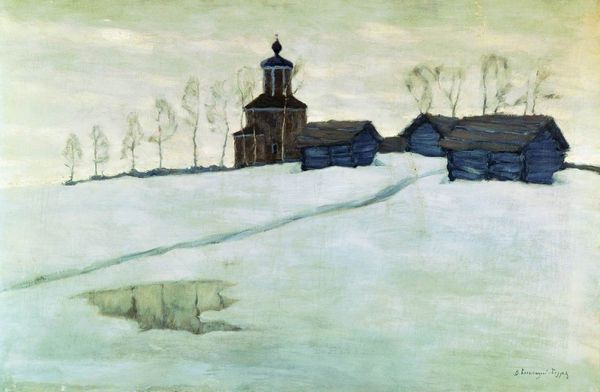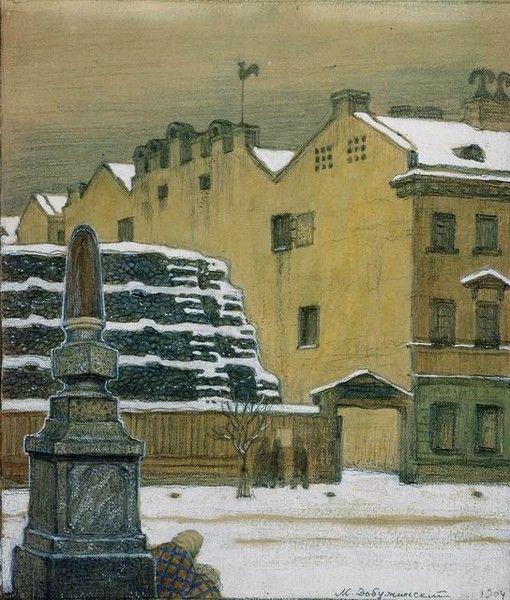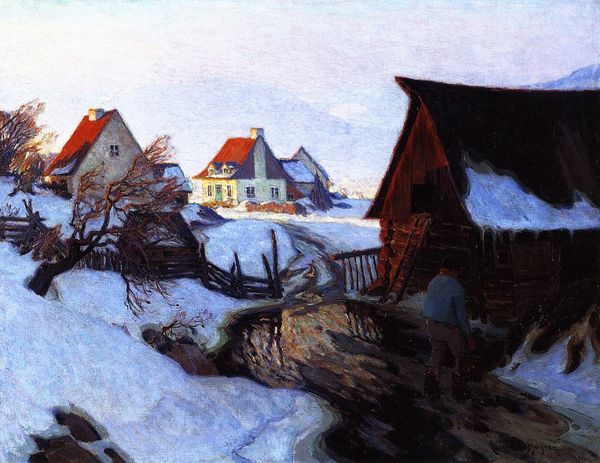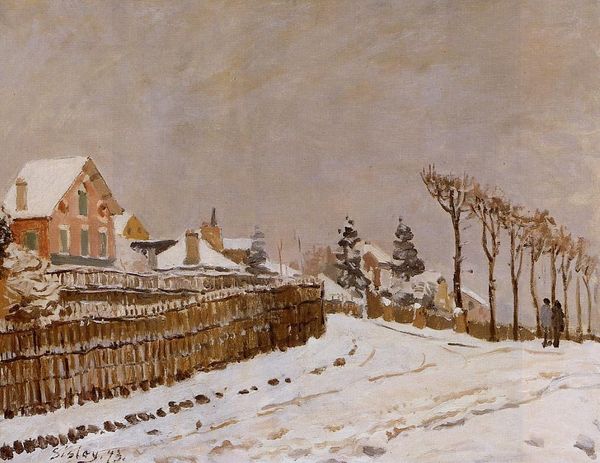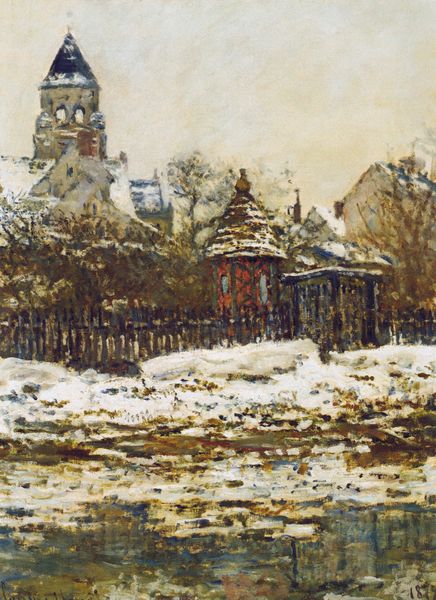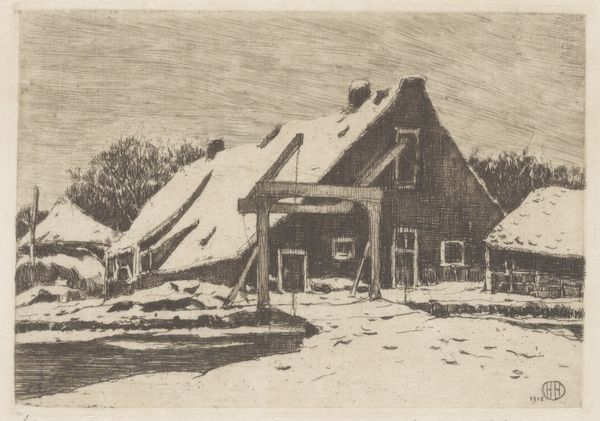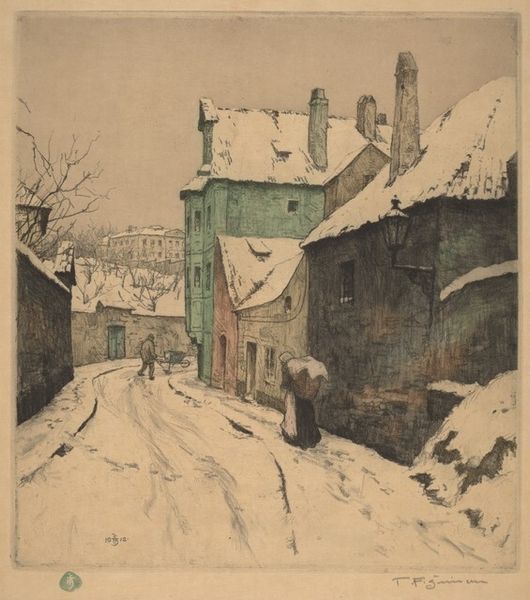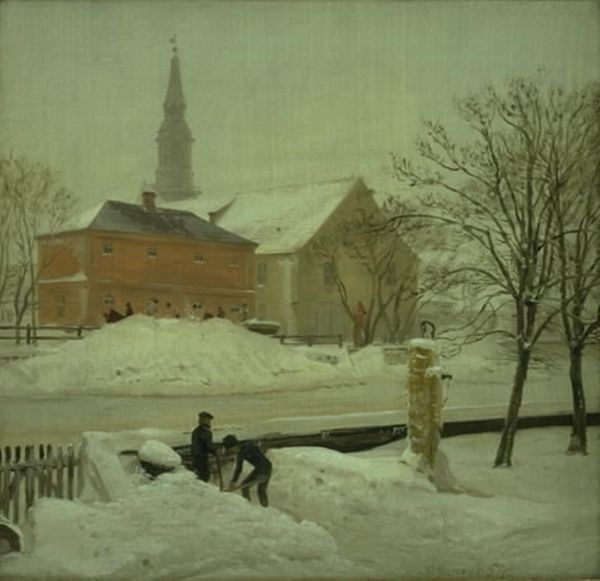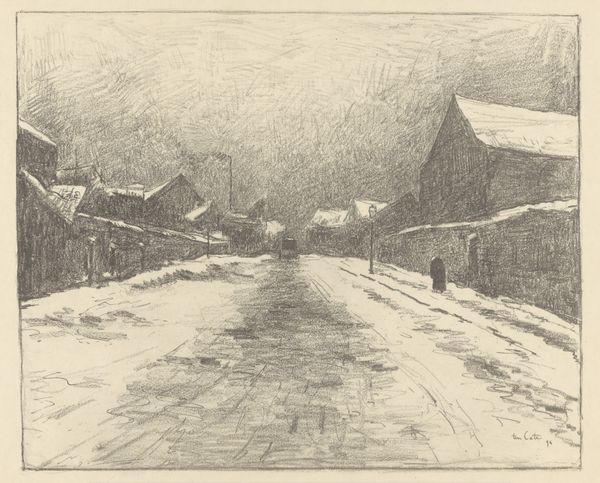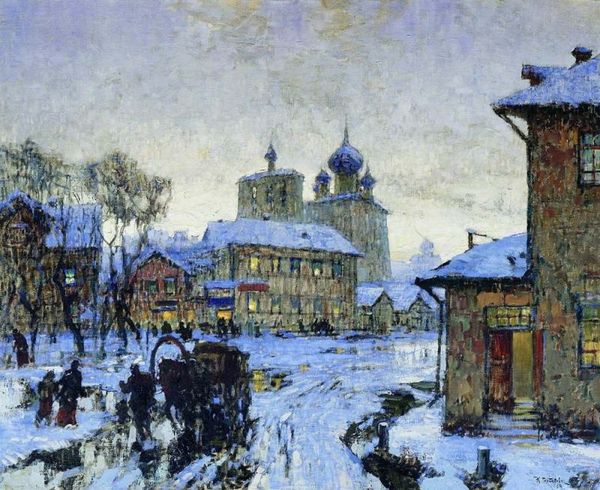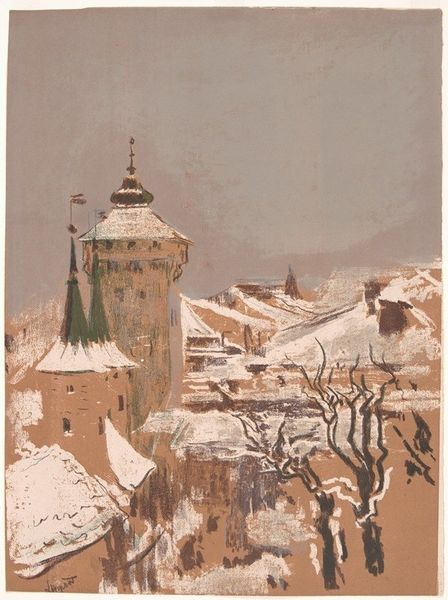
Dimensions: 16 x 21 cm
Copyright: Public domain
Editor: We're looking at Edvard Munch's "Old Aker Church," painted in 1881. It's an oil painting and the first thing I notice is this pervading sense of quiet melancholy. What do you see in this piece? Curator: The composition certainly evokes a somber mood. Notice how Munch orchestrates the formal elements. The monochromatic palette, primarily muted greys and yellows, minimizes coloristic exuberance, directing our attention instead to the structure. How does the weight of the church's spire contribute to your perception of the overall mood? Editor: It does feel heavy, almost oppressive against that pale sky. But I also feel drawn in by the way the road and rooftops create converging lines toward the church. Curator: Precisely! These formal devices direct the viewer’s gaze. Furthermore, observe the impasto technique. Munch uses visible brushstrokes to build texture and volume. In semiotic terms, the texture operates as a signifier. How might you interpret the significance of that surface? Editor: Perhaps it suggests a kind of roughness or hardship. The town and church aren’t idealized, but realistically presented, even bleak. Curator: A very insightful observation. The lack of idealization contributes to the painting's authenticity. Also, consider how the horizontal orientation contrasts with the towering church. It speaks to a visual imbalance. Munch is intentionally playing with our perception and feelings using carefully considered compositional strategies. Editor: I hadn’t thought about it in terms of semiotics or signifiers. Considering how each element contributes to a unified effect gives me a richer understanding. Curator: By focusing on the internal relationships of form and technique, we reveal meaning otherwise hidden.
Comments
No comments
Be the first to comment and join the conversation on the ultimate creative platform.
